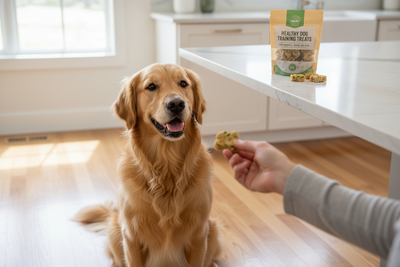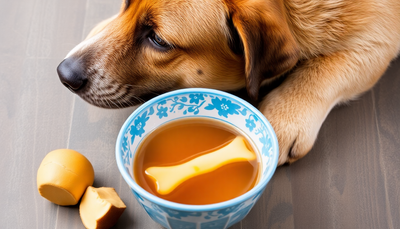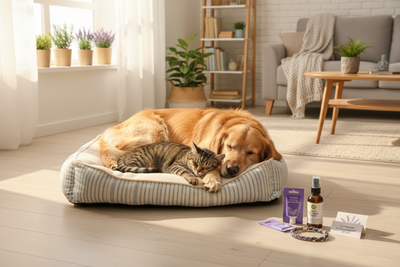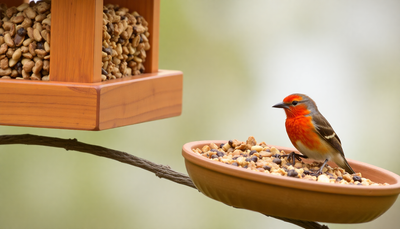
As pet owners, ensuring the safety of the treats we give our dogs is a top priority. Ostrich bones, with their lower fat content and potential health benefits, have piqued interest as an alternative to traditional bones for dogs. However, their suitability for canine consumption is still under scrutiny. This article will explore the nutritional value of ostrich bones, examine their potential benefits and risks for dogs, and provide expert insights to help you make an informed decision about this potential treat for your canine companion.
Are Ostrich Bones Safe for Dogs?
Understanding the Nature of Ostrich Bones
Ostrich bones have gained popularity as a natural treat for dogs, but the question remains – are they safe? Understanding the nature of ostrich bones is crucial in determining whether they are suitable for canine consumption.
Ostrich bones, known for their durability and low fat content, have become an increasingly popular choice for pet owners seeking a long-lasting and healthy chew for their dogs. However, it's essential to delve deeper into their characteristics to fully comprehend the safety aspect.
When considering the potential risks of giving ostrich bones to dogs, it's important to acknowledge that while they are less likely to splinter compared to other types of bones, there's still a risk of choking, intestinal blockages, or dental damage. To mitigate these dangers, pet owners should carefully monitor their dogs during bone consumption and consider factors such as the dog's size, chewing behavior, and dental health before introducing ostrich bones into their diet.
Despite the potential risks, ostrich bones offer several benefits for dogs. They are a rich source of essential nutrients like calcium and phosphorus, promoting dental health and providing mental stimulation. Additionally, the act of gnawing on bones can help alleviate boredom and reduce stress in dogs.
While ostrich bones can be a suitable chew option for some dogs, it's crucial for pet owners to make informed decisions. Supervision during bone consumption is key, and factors such as the dog's size, chewing behavior, and dental health should be carefully considered before incorporating ostrich bones into their pet's diet. By understanding the nature of ostrich bones, acknowledging potential risks, and embracing the benefits, pet owners can make educated choices regarding this natural treat for their beloved canine companions.
Safe and Healthy Bone Alternatives for Dogs
Ensuring the safety of the bones you offer your dog is paramount. Here are some safe and healthy alternatives to ostrich bones:.
Rawhide Bones
Rawhide bones are a popular choice for many dog owners. However, it's crucial to select high-quality, natural rawhide to guarantee the safety of your dog. Look for options that are free from added chemicals or preservatives.
Bully Sticks
Made from dried bull or steer pizzle, bully sticks are a nutritious and safe alternative to ostrich bones. Not only are they highly digestible, but they also provide dental benefits for your dog, promoting good oral hygiene.
Antler Chews
Antler chews are long-lasting and natural options for dogs to chew on. Rich in minerals and free from splintering, they offer a safe and satisfying chewing experience for your pet.
Dental Chews
Designed to promote oral health, dental chews are an excellent alternative to traditional bones. Look for options endorsed by veterinary dental associations to ensure they meet safety and quality standards.
Exploring Healthy Chew Alternatives
In addition to bone substitutes, there are several other healthy alternatives to consider for your dog's chewing pleasure:.
Rubber Chew Toys
Durable rubber chew toys not only promote healthy chewing habits but also help alleviate teething discomfort in puppies. Look for toys specifically designed to withstand heavy chewing.
Frozen Carrots
A crunchy and refreshing chew, frozen carrots are low in calories and high in fiber, making them an excellent healthy alternative to bones. They also provide relief for teething puppies.
Interactive Puzzle Toys
Not only do interactive puzzle toys provide mental stimulation, but they also encourage natural chewing behavior. These toys are particularly beneficial for dogs with allergies or sensitivities to traditional bones.
By exploring these safe bone options and healthy chew alternatives, you can ensure that your dog's chewing needs are met while prioritizing their health and safety. Remember to supervise your pet during chewing activities and consult with a veterinarian to determine the best options for your individual dog's needs.
Section: Tips for Safe Dog Treats
Providing your furry friend with the right treats is crucial for their overall well-being. Here are some essential tips to ensure the safety and health benefits of your dog's treats.
- Guidelines for Choosing Dog Treats
-
Selecting the right treats for your dog is essential for their health and happiness. Always opt for treats made with high-quality, natural ingredients. Avoid those with excessive additives, preservatives, or artificial colors. Carefully reading the labels and ingredients is crucial to ensure that the treats meet the highest standards of quality and nutrition. Consider your dog's dietary needs and any allergies they may have when selecting treats.
-
Recommended Treats for Dogs.
-
When choosing treats for your dog, consider options that offer additional health benefits. Treats designed to promote dental health, such as dental chews or treats that help reduce tartar and plaque, are excellent choices. These treats not only provide a tasty snack for your dog but also contribute to their overall dental hygiene. Furthermore, treats with beneficial ingredients like glucosamine and chondroitin can support joint health in dogs, especially as they age. These supplements are essential for maintaining your dog's mobility and joint function as they get older.
-
Homemade Treats.
-
Consider making treats for your dog at home using vet-approved recipes. This way, you have full control over the ingredients, ensuring that your furry friend receives a healthy and safe snack. Homemade treats can be tailored to your dog's specific dietary requirements and are often free from unnecessary additives and fillers. Always ensure that the ingredients used are safe for dogs and avoid including any harmful substances such as chocolate, onions, or artificial sweeteners like xylitol.
-
Treat Size and Frequency.
- It's important to consider the size and frequency of treats given to your dog. Treats should only account for a small portion of your dog's daily caloric intake. Always follow the recommended serving size provided on the treat packaging and consider the treat's caloric content. Additionally, avoid overfeeding treats to prevent any adverse effects on your dog's weight and overall health. Be mindful of the treat's texture and hardness, especially for senior dogs or those with dental issues, to prevent any choking hazards or dental injuries.
By following these tips, you can ensure that your furry companion enjoys their treats safely while reaping the nutritional benefits they provide. Remember, your dog's health is paramount, and providing them with safe, high-quality treats is an integral part of their care and happiness.
Conclusion
While ostrich bones may seem like a healthy and novel treat for dogs, it's important to exercise caution. Ostrich bones can pose a potential health risk to dogs due to their density and hardness, which can lead to dental damage or gastrointestinal issues. It's advisable to consult with a veterinarian before offering ostrich bones to your dog and to always supervise their chewing to ensure their safety. Opting for safer, veterinarian-approved alternatives can help promote your dog's dental health and overall well-being.






